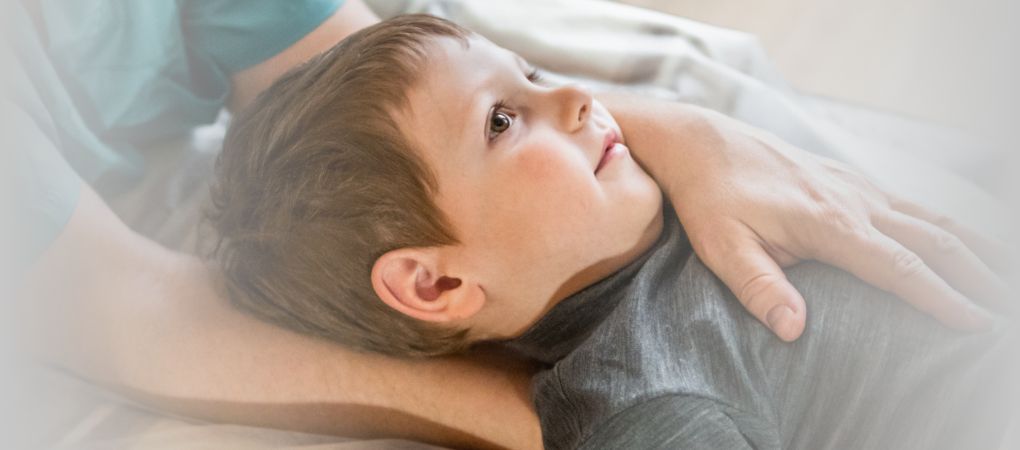Maiwen Habchi
|
27/09/2022 - Last update 25/05/2023
Samantha DeMarsh, Anneliese Huntzinger, Alison Gehred, Joseph R. Stanek, Kathi J. Kemper, Jennifer A. Belsky | Year 2021
Pediatric Osteopathic Manipulative Medicine, A Scoping Review
Scope:
Pediatrics
Type of study:
Scoping review
Date of publication of the study’:
2021/Feb/01

Purpose of the study
- Objective: to evaluate the effectiveness, safety and feasibility of OMT in the pediatric field
- Measured outcomes:
• primary: methodology, conclusions, strengths and limitations of the studies
• secondary: treated conditions, OMT techniques applied and adverse effects
Methods
- Article analyzed: 30
- Search string: the following terms have been used: “osteopathic manipulative treatment”, “osteopathic manipulation”, “orthopedic manipulation” and “osteopathy”
- Criteria of inclusion: studies evaluating OMT on pediatric patients (age 0-18 years); studies carried out in the United States; studies written in English; primary studies (articles in which new data are presented) of any type, year and setting (eg, patients at home, hospitalized patients).
- Criteria of exclusion: studies on adult patients (age > 18 years); editorials, revisions, responses or secondary studies (articles that comment on other articles).
Characteristics of the studies
- 9 randomized controlled trials (RCT)
- 4 prospective cohort studies
- 2 retrospective cohort studies
- 7 studi cross-sectional studies
- 8 clinical case reports
- 23 studies published on JAOA (Journal of American Osteopathic Association)
- 26 studies on patients out of hospital
- 17 studies published since the year 2000
- 8 studies on musculoskeletal disorders
- 6 studies on neurological syndromes
- 5 studies on otolaryngological pathologies
- 20 studies on OMT as a therapy
- 5 studies on OMT as prevention
- 4 studies on somatic dysfunction characteristics
- 1 study on OMT adverse effects
- 13 studies reported statistical analysis to assess the effectiveness of OMT
- Evaluation of the studies’ quality through the GRADE system
Participants
- Numbers in the smallest study (with the exception of case reports): 8 infants
- Numbers in the biggest study: 1250 infants
- Total: 4077 infants/children/young people
- Mean age: from 2 months to 15 years
Interventions and evaluations
- OMT alone or in addition to standard care
- personalized (16 studies) or according to a standardized protocol (14 studies)
- articulatory, cranial, ligamentous tension balancing, membranous tension balancing, myofascial release, muscle inhibition, muscle energy, high-velocity low-amplitude and lymphatic pump techniques
- In the control groups: sham treatment, standard of care alone, waiting list (no intervention during the study; once the study is finished, patients received the treatment), complementary therapies
Results
- Primary outcomes: only 9 of the 30 studies presented a strong level of evidence to the point of defining clinical recommendations. Of these studies, 5 were RCT and, of these 5, 4 resulted in high methodological quality. These studies concerned the usefulness of OMT in improving neurodevelopment in the case of disorders (spastic cerebral palsy, partly behavioural problems or learning difficulties) and in preventing and treating otolaryngological diseases (acute otitis media, asthma). With regard to the musculoskeletal conditions, the degree of evidence was found to be low.
- Secondary outcomes: no adverse effects related to OMT were found in the studies analyzed. Only in one study did a participant experience a worsening of his condition, but this event resolved spontaneously. The other adverse effects recorded were due to the condition of the participants and not to the treatment itself. In essence, OMT therefore appears to be of low risk in relation to its possible benefits, but none of the studies has adequately assessed this aspect.
Discussion
Since the year 2000 we have witnessed an increase in publications in the osteopathic field but, unfortunately, the quality of studies has often remained low while also containing significant biases (errors that can confuse the results). Often the randomization was not done properly and patients knew which group they were in. In addition, the placebo effect of simple sham treatment was rarely considered. The few high quality RCTs do not allow specific recommendations of OMT, which, therefore, remains a tolerable treatment as tendentially safe but not recommendable. However, larger, more robust and multicentric RCTs are needed to specifically evaluate both the effectiveness and the safety of OMT. In particular, studies based on the most recent scientific evidence and organized according to the research methodology guidelines (eg, CONSORT) are needed. Studies also comparing OMT to valid standard treatments based on evidence of effectiveness and using validated and clinically useful outcomes.
The review of Osteopedia
By Marco Chiera
Strengths: in-depth analysis of the US literature; tables with very detailed description of each study, of its strengths and its limitations; very ample total sample analyzed.
Limits: only studies conducted in the United States have been evaluated (despite the important developments of pediatric osteopathy in other countries, eg, Italy); European studies have been excluded because European osteopaths would only study musculoskeletal aspects unlike US osteopathic physicians, which is not really the case. The studies were given a score of low quality in case of personalized OMT as it is not replicable. Although replicability is fundamental in science, in the clinical practice it is an unsustainable concept: moreover, today also the research is moving more and more towards studies that evaluate real conditions (therefore personalized) and not laboratory ones (see well-done observational studies, N-of-1 studies or benchmarking controlled trials).

Are you an osteopath?
Register and enjoy the membership benefits. Create your public profile and publish your studies. It's free!
Register now
School or training institution?
Register and enjoy the membership benefits. Create your public profile and publish your studies. It's free!
Register now
Do you want to become an osteopath? Are you a student?
Register and enjoy the membership benefits. Create your public profile and publish your studies. It's free!
Register now







